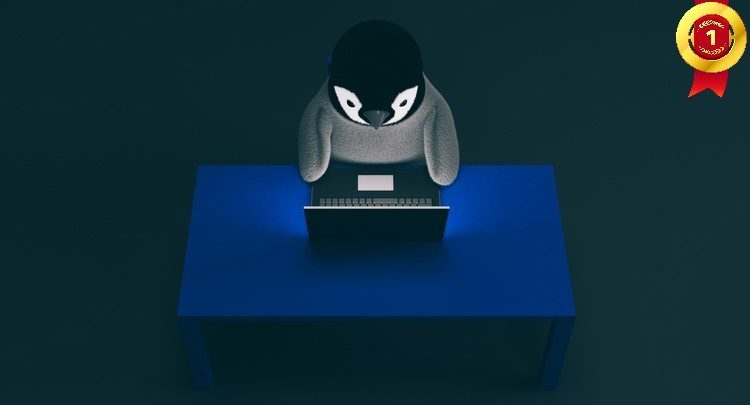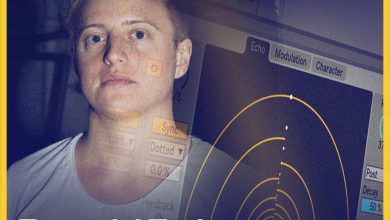Linux Mastery – Complete Linux Course for Beginners

Linux Mastery – Complete Linux Course for Beginners Free Tutorial Download
What you’ll learn
-
Obtain enough information needed to easily install, run and manage the Linux operating system in most of its distributions.
-
Learn the Linux operating system fundamentals/essential skills.
-
Learn the Linux system administration basics and a large number of the most important Linux commands.
-
Enjoy the features offered by the Linux OS.
-
Learn the Linux shell basics.
-
Learn accessing Linux virtual consoles.
-
Learn running and managing the Linux operating system professionally.
-
Learn the Linux quick start commands.
-
Learn the Linux relative and absolute paths.
-
Learn the Linux shell special keys.
-
Learn the most important files and directories on the Linux system.
-
Learn the Linux command-line file management.
-
Learn Linux I/O redirection.
-
Be able to get help in Linux graphically and command-line using different tools.
-
Be able to access the Linux operating system graphically and from the command line.
Requirements
-
A PC with the minimum requirement of installing Ubuntu 18.04 LTS: [ 2 GHz dual-core processor, 4 GiB RAM (system memory), 25 GB of hard-drive space, VGA capable of 1024×768 screen resolution Either a DVD drive or a USB port for the installer media, Internet access is helpful.
JOIN THE BEST COMPLETE LINUX (SERVER/DESKTOP) OPERATING SYSTEM COURSE FOR NEWBIE LINUX USERS!!
Hi. My name is Mustafa and I’m the author of the ‘Linux Mastery’ course. I started working as a network and computer systems administrator since January 2011. I have a bachelor degree in engineering from Alexandria University. After finishing university, I concentrated on learning the Linux system administration. I have many certifications in Linux system administration, network administration, database administration, and some programming languages ‘C, C++, and Python’. I have a large experience in working on Linux using RHEL, CentOS, and Ubuntu Linux distributions. I have a desire to teach others and transfer my experience to them in an easy and simplified way.
- A High Benefit Course to Learn the Linux Operating System Step by Step.
- A Large Number of Linux Important Shell Commands is Included in this Course.
- The Course Include Quizzes on All Sections.
- The Course is Manually Captioned.
- The Course is Compressed to Achieve the Course Goal in a Short Time.
// Sorry for some inadvertent language mistakes since my mother tongue isn’t English, and for this reason, I have added captions for all the lectures in the course.
Course Content:
- Background & Introduction.
- Beginning with the introduction of the Linux Operating System and mentioning its history.
- What is an operating system?
- The pieces that make up the operating system.
- Definitions of the bootloader, the kernel definition, daemons, the shell, graphical server, desktop environment, and applications.
- The main differences between Linux and Windows Operating Systems.
- Linux Pros & Cons.
- What is Linux distribution?
- The most popular Linux distributions for desktops & servers.
- How to choose the right distribution for you?
- The meaning of the open-source.
- What is GNU?
- Linux Installation.
- Linux live distribution.
- Creating a bootable Ubuntu USB stick from Microsoft Windows.
- Trying Ubuntu without installing it.
- Introducing the VirtualBox program and showing the step by step procedure of downloading and installing it.
- Creating a new Virtual machine for the Ubuntu OS.
- Steps for downloading and installing the Ubuntu 18.04 OS.
- Installing the VirtualBox Guest Additions.
- Having a full-resolution Ubuntu VM on your computer.
- Starting the Ubuntu OS.
- Logging in and Logging out.
- Introducing the Ubuntu OS.
- Introducing the Shell or Terminal “the command line interface”.
- Installing software on Ubuntu intro.
- Steps for adding and removing applications from the Ubuntu OS Graphically and using the Command line.
- The sudo command.
- The apt-get command.
- The apt-cache command.
- Opening a list of your currently installed programs in terminal using the dpkg command.
- The aptitude command.
- The Ubuntu Software Center.
- Installing and uninstalling software in Ubuntu using Debian package ‘dpkg’.
- Manual download of a .deb (Debian package) method.
- QuickStart.
- The Linux system basic modes.
- Ways of launching a terminal on Ubuntu.
- Describing the command prompt in the terminal.
- How to get into the text mode ‘virtual consoles’ and how to switch back to the graphical mode.
- The Important Basic Commands of the Linux OS.
- The pwd command.
- The cd command.
- The absolute path.
- The relative path.
- The ls command.
- The passwd command.
- The file command.
- The cat command.
- The exit command.
- The Linux shell special keys.
- Getting help in Linux.
- The man command.
- The info command.
- The whatis command.
- The which command.
- The –help option.
- The graphical help.
- The gnome-help command.
- The yelp command.
- About Files and the File System.
- The shell built-in commands.
- Overview of the Linux File System.
- The files types.
- The file type signs.
- What is the partition?
- The kinds of major partitions on a Linux system.
- The data partition.
- The swap partition.
- The important files and directories on the Linux operating system.
- The standard root partition.
- The swap space.
- The /boot partition.
- The /usr partition.
- The /home partition.
- The /var partition.
- The /opt partition.
- The mount points.
- The df command.
- Orientation in the file system.
- The PATH environment variable.
- The echo command.
- Displaying and setting paths.
- Adding a new directory to the PATH variable.
- The export command.
- The ( ~/.profile & ~/.bashrc ) files.
- The source command.
- The kernel.
- The shell.
- The shell types.
- The sh or Bourne Shell.
- The Bash or Bourne Again Shell.
- The csh or C Shell.
- The tcsh or Turbo C Shell.
- The ksh or the Korn shell.
- The file /etc/shells.
- The SHELL variable.
- The HOME variable.
- Navigating through the Linux File System.
- The /etc directory.
- The /dev directory.
- The /var directory.
- The ls command popular options.
- Creating, copying, moving and removing files and directories.
- Finding files and paths.
- The which command.
- The find command.
- The locate command.
- Linking Files.
- The hard link.
- The soft link or symbolic link.
- Creating a symbolic link.
- The ln command.
- Processes.
- What is a process?
- Multi-user and Multi-tasking Process Types.
- Interactive and Automatic Processes.
- Foreground process.
- Background process.
- The less command.
- Job control.
- The kill command.
- Daemons.
- Linux Pipe.
- The pg command.
- The more command.
- The grep command.
- The sort command.
- Linux Filter.
- Process Attributes.
- The ps command.
- Displaying Process.
- The real group owner of a process (RGID).
- The effective group owner of a process (EGID).
- The SGID (Set Group ID upon execution).
- The pstree command.
- The top command.
- How to Create a Process.
- How to End a Process.
- Linux Signals.
- Showing signals list.
- The common signals in Linux.
- SIGTERM.
- SIGINT.
- SIGKILL.
- SIGHUP.
- SIGSTOP.
- The boot process.
- What is BIOS?
- The Master Boot Record (MBR).
- The boot process init.
- Init Run Levels.
- The boot Process Special Cases.
- Systemd.
- Identifying Automatically Started System Processes.
- Controlling Services and Daemons.
- The who command.
- The chkconfig utility.
- Reboot, halt, and shutdown commands.
- Managing Processes.
- The time command.
- About system performance.
- About system Load.
- Managing process priority and niceness.
- The nice command.
- The renice command.
- Managing Process CPU and Memory Resources.
- The uptime command.
- The memusage command.
- The memusagestat command.
- Tuning System Performance.
- The vmstat command.
- The netstat command.
- The iostat command.
- Network I/O problems.
- Network integrity problems.
- Disk I/O problems.
- Users classes.
- The graphical tools.
- The Gnome System Monitor.
- The xload application.
- Interrupting processes.
- The pidof command.
- The xkill program.
- Scheduling processes.
- The sleep command.
- The at command.
- The atq command.
- The atrm command.
- The cron and crontab facilities.
- Input and Output Redirection.
- Linux Regular Expressions.
- Basic regular expressions.
- Interval Regular expressions.
- Extended regular expressions.
- Brace expansion.
- Simple Redirections.
- The redirection operators.
- Input redirection.
- Combining redirections.
- The spell command.
- The append operator.
- The date command.
- Advanced Redirections.
- Use of file descriptors.
- Separating standard output from standard error.
- The tty command.
- The tee command.
- The uptime command.
- Communicating Utilities used in Linux.
- The ping command.
- The ftp command.
- The telnet command.
- The ssh command.
- Print & Email.
- The pr command.
- Printing a file.
- The lp and lpr commands.
- Sending E-mails from the Terminal.
- The ssmtp command.
- Text Editors.
- Importance of Text Editors.
- The Vim Editor.
- The Vim editor operation modes.
- The Vim editor basic commands.
- The vimtutor command.
- Linux Virtual Terminals.
- What are virtual terminals?
- Starting virtual terminals and navigating through them.
- Virtual terminal shortcuts.
- The Linux System Administration Basics.
- Creating a user using the terminal.
- Creating a user using the GUI.
- Deleting and disabling an account using the terminal.
- Deleting and disabling an account using the GUI.
- Adding a user to a usergroup.
- Removing a user from a usergroup.
- The gnome-system-tools.
- The users-admin command.
- The finger command.
- The File Security in Terms of Ownership and Permissions.
- Levels of authorization in Linux.
- Ownership in Linux files.
- Permissions.
- The chmod command.
- The chmod command absolute and symbolic modes.
- Changing Ownership and Group.
- The chown command.
- The chgrp command.
- The File Mask.
- The umask command.
- The touch command.
- Special Access Rights ‘Special modes’.
- for Files and Directories like ‘
- The Sticky bit mode.
- The SUID (set user ID).
- The SGID (set group ID).
-
The Bonus of the Course, Steps of installing ‘Qt Creator’ on Ubuntu OS.
###The Commands included in the course:
- vim
- vimtutor
- man
- info
- whatis
- apropos
- cat
- –help option
- apt-get
- sudo
- dbkg
- pr
- lp
- lpr
- pwd
- cd
- ls
- passwd
- file
- exit
- touch
- mkdir
- rm
- rmdir
- mv
- cp
- grep
- sort
- find
- ln
- echo
- jobs
- bg
- fg
- kill
- xkill
- tty
- tee
- date
- uptime
- ps
- pstree
- top
- nice
- renice
- vmstat
- netstat
- iostat
- sleep
- at
- atq
- atrm
- nano
- systemct
- crontab
- ping
- ftp
- telnet
- ssh
- ssmtp
- shutdown
- chmod
- adduser
- su
- userdel
- groupmod
- usermod
- deluser
- chown
- chgrp
- groups
- umask
ENROLL NOW AND ENJOY LEARNING THE LINUX FUNDAMENTALS / LINUX ESSENTIAL SKILLS!!
Who this course is for:
- Anyone with a desire to learn Linux.
- Anyone who needs to learn Linux for a personal or business project.
- A newbie Linux user who wants to be professional in using Linux.
- An existing Linux user who wants to increase his knowledge.
- Anyone who wants to learn the basics of Linux system administration.
- Windows or macOS users who want to switch to Linux.
Student testimonials:
- Ahmed: Amazing teacher, great enthusiasm, very clear explanations – My favourite course this year! Mr Mostafa is a very stimulating teacher who knows his subject very well. I appreciated his enthusiasm for the subject. The teacher was of excellent quality.
- Raisul Sohan: This is a super course. Now I will install Linux on my pc.
- Stanley Ezendiokwere: The materials have been insightful so far.
- Mostafa: Full information with a clear explanation.
- A Hassan: Awesome ????? This Course made it easy for me to learn Linux, Thanks.
- Licchi Technology: Truly an amazing course for beginners to learn Linux. Totally recommend this course for beginners.
- The Ideal Student for this course is a newbie Linux user who wants to Learn how to run and manage the Linux operating system professionally in a short time.
- A Current Linux user who wants to Increase his Knowledge.
- May be interesting and useful for home users who want to learn more about the Linux operating system.
Download Linux Mastery – Complete Linux Course for Beginners Free
https://xmbaylorschool-my.sharepoint.com/:u:/g/personal/mossh_baylorschool_org2/EeVVPHf7zlJNrbxVBdDvn9YBqZZ–DViLlfws7vd2zBkdA
https://bayfiles.com/Ldb7neM1ob
https://drive.google.com/file/d/1hmzMLqbcXEOsgIerzrPYWyB98_ea1Ihs/view?usp=sharing
https://uptobox.com/68r66x9osq0h




